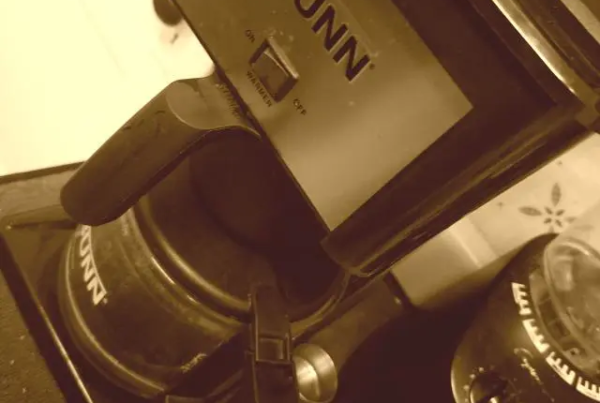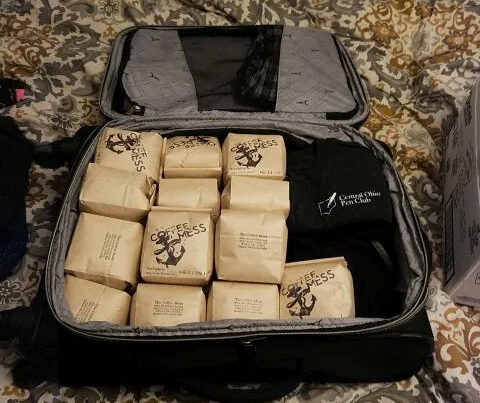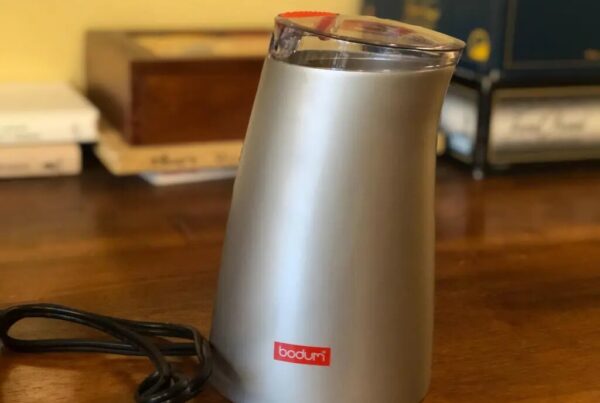This month I’m writing about blends. Last week I talked a little bit about what blends are, and one reason coffee roasters blend coffees.
This time I’m going to talk about another reason roasters like making blends, and dig into why blends are a good choice for lots of coffee drinkers.
Coffee can be inconsistent from harvest to harvest. Blending coffees helps roasters keep products consistent.
Picture a world where the only coffee you have available to drink is a single origin coffee from the same local farm, day after day, year after year. This wouldn’t be so bad if you lived near an awesome farm, to be sure, although it might get boring.
You would be subject to the growing conditions and the foibles of each harvest. Your coffee would be at risk from plant diseases and insect pests and overly rambunctious neighbors. It would be a dicey situation some of the time.
If all a roaster was able to offer was single origin coffee, the products could be vastly different from year to year, and it would be confusing as all hell to customers who thought they liked a particular product, only to be stuck with a bad harvest one year and be bitterly disappointed.
Blending coffee enables a roaster to keep tastes much more consistent over longer periods of time. As crops and beans differ and change, the roaster can make adjustments to the blends on offer, switching out beans when availability and or quality changes.
If one bean in a blend changes and the others stay the same, the blend won’t necessarily be too drastically different.
Blends enable a roaster to deliver a more consistent product with a constant name over the years. WHen I first started blending Da Mooon! 5 years ago, the coffees I was using were not the same coffees I use to make it today. That’s ok, because I’m able to select coffees that get me close enough to the flavor profile I’m after and adjust the blend, the roast or both to get it perfect.
You! Right there! Why Drink Coffee Blends?
There are lots of good reasons to drink coffee blends. Here are a few:
It’s easier. Check the roast level, check the origins. If you like the roaster and it’s within the parameters of coffee you’ve liked in the past, it’s a good bet you’re going to enjoy a blend. You’re saved the trouble of parsing a difficult-to-understand label, which brings us to another point:
It’s less intimidating. Single origin coffee can be daunting in many ways. How do you choose which one to buy? If you just get the damn breakfast blend and drink that in the morning, you can worry about drinking a fancy pourover later, maybe after lunch. Speaking of fancy coffee:
FOMO can make drinking coffee stressful. Do you want the one that’s supposed to taste like chocolate and lemon seeds or the one that’s red fruit and basketballs? What if you don’t taste the basketballs, what does that say about you? Are you just a big phony who ought to be drinking Folgers? Why are you stressing about this at 6 in the morning before you’ve even had a chance to chug a mug? And finally:
Blends taste better to some people. Ready for a flawed metaphor? Think about a color wheel (or, if you’re into it, a flavor wheel.) Different single origin coffees have bands of flavor in certain spots. It’s fun to taste coffees and figure out what those flavors are. BUT. It’s not for everybody, and not all single origins have a balance of flavors that makes an all-around good drinking cuppa.
Some people don’t want to be a gustatory world traveler all the time. Some people want a solid cup of fresh coffee that’ll juice them into their freaking day. Blends, my friend. Blends.
More Good Questions:
How do you get the ratio of beans right when attempting to make a new blend? Guess and check? Research prior? Both?
Stewart
How do you come up with a blend?
Robert
Great questions! When I blend coffees, I’m usually starting from one of two points.
In the first scenario I’m shooting for a flavor/roast profile, and then picking the origin beans I think will get me there. From there I experiment with ratios and roast levels until I get what I’m after. some examples of target profiles could be:
- a light roasted, light bodied easy drinker (some folks would call this a Breakfast Blend.)
- A full-flavor, extra complex blend to commandeer peoples’ entire lives
- A resilient group of beans that will withstand a very dark roast
In the other scenario, I’m starting with a bean and adding complimentary elements. For instance, I might take a Colombian coffee that has good flavor but lacks body and add something from Indonesia to fill out that part of the profile. If I want some sparkling citrus or floral qualities I can toss in some Ethiopia coffee.
The possibilities are truly endless.




